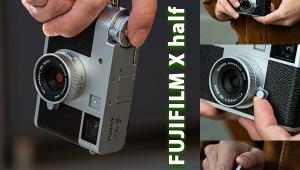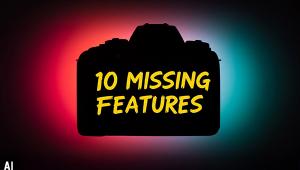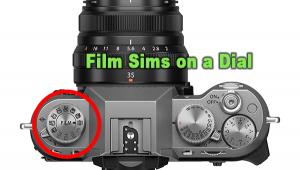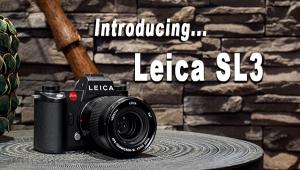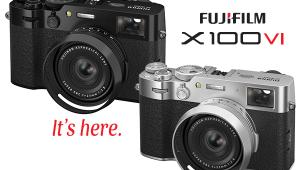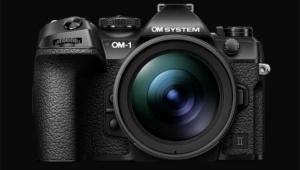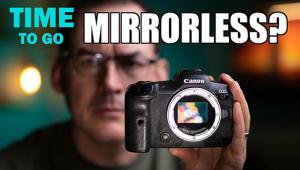Shutterbug’s Exclusive photokina Coverage; Rangefinder Cameras: Leica Steals The Show
When it came to rangefinders, Leica completely stole the show: Zeiss and Voigtländer had only one new product each. Admittedly they were interesting—an 85mm f/4 Tele-Tessar in Leica M-compatible ZM mount and a dual-format rangefinder folder, the Bessa III—but they were somewhat eclipsed by Leica’s four new lenses and the revised M8.2 camera body.
The item that had provoked the most speculation was the 50mm f/0.95 Noctilux, a replacement for the recently discontinued 50mm f/1 Noctilux, a design almost 40 years old. At 7200 euros (call it $10,000 at the time of this writing), it’s a staggeringly expensive eight-glass, five-group lens, but that’s what you have to pay for a state-of-the-art design (two ground and polished aspherical elements, one floating element) with a speed designed to match the fastest general-application lens ever built, the semi-legendary Canon “Dream.” (When converting prices, incidentally, remember that European prices are normally quoted inclusive of Value Added Tax (typically 16-21 percent) while US prices are normally quoted net of sales taxes.)
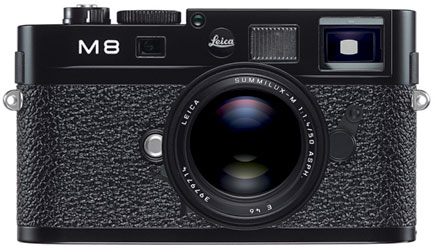 |
|
|
The f/0.95 speed is mainly a marketing exercise, of course: the extra 1⁄6 stop as compared with f/1 is neither here nor there, and its main raison d’être is mainly to stop camera club “experts” saying, “Of course, you know Canon built an even faster lens, way back in the 1960s.” On the other hand, I was a bit surprised that they didn’t go even faster—f/0.9, say—just to establish a record. The answer, it turns out, is rooted in inherent limitations in lens design, the camera mount, and the position of the viewfinder.
For maximum freedom from spherical and other aberrations, and minimum focus shift, you want a lens that is as symmetrical as possible. Any greater departure from symmetry than is found in the new Noctilux would both have compromised image quality and resulted in an unacceptably large front glass, which would have blocked a good deal of the viewfinder. Alternatively, a similar symmetrical design, but with more speed, would require a larger-diameter lens mount. Hence f/0.95.
 |
|
|
From very limited acquaintance, performance at full aperture has the same magical, three-dimensional, painterly quality as the old f/1 version, but I wasn’t able to try it extensively. A lot of the stuff you see at photokina is in prototype form, often less than fully functional, and Leica wasn’t completely happy with the image quality of the prototype I tried. Performance at smaller apertures is claimed to be close to other Leica 50mm lenses, especially the 50mm f/1.4 ASPH, which the old f/1 certainly wasn’t.
Despite the hoopla surrounding the f/0.95, the 21mm f/1.4 is arguably more worthy of attention: the fastest ever 21mm, introducing the possibility of ultra-low-light photography with a very wide angle lens and (for the first time) presenting real opportunities for selective focus with this focal length. Of course it’s expensive—5000 euros, or around $7000—but once again, there’s no alternative, and once again it’s a state-of-the-art design with 10 glasses in eight groups, including one aspherical surface and a floating element design. The 24mm f/1.4 is very similar in design to the 21mm f/1.4, and costs the same, but has only one aspherical surface.
 |
|
|
Thanks to the 3:4 crop factor of the M8 (with its 18x27mm sensor as against the 24x36mm of 35mm film), the 21mm functions on it as the equivalent of a 28mm lens, while the 24mm f/1.4 functions as the equivalent of a 36mm on the M8. As the 35mm f/1.4 has been my standard lens on film for almost 30 years, this is obviously the lens that interests me most. But yet, but yet… As I still shoot 35mm, it’s a lot of money to pay for the same (effective) focal length and aperture. If I had completely switched to digital, I wouldn’t hesitate: I’d find the money somewhere. Shooting both, I’m not so sure.

